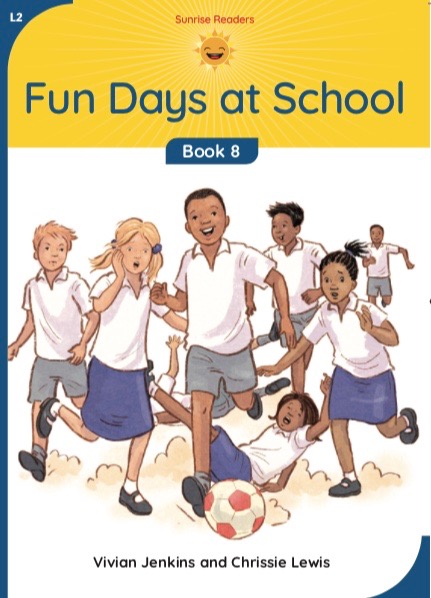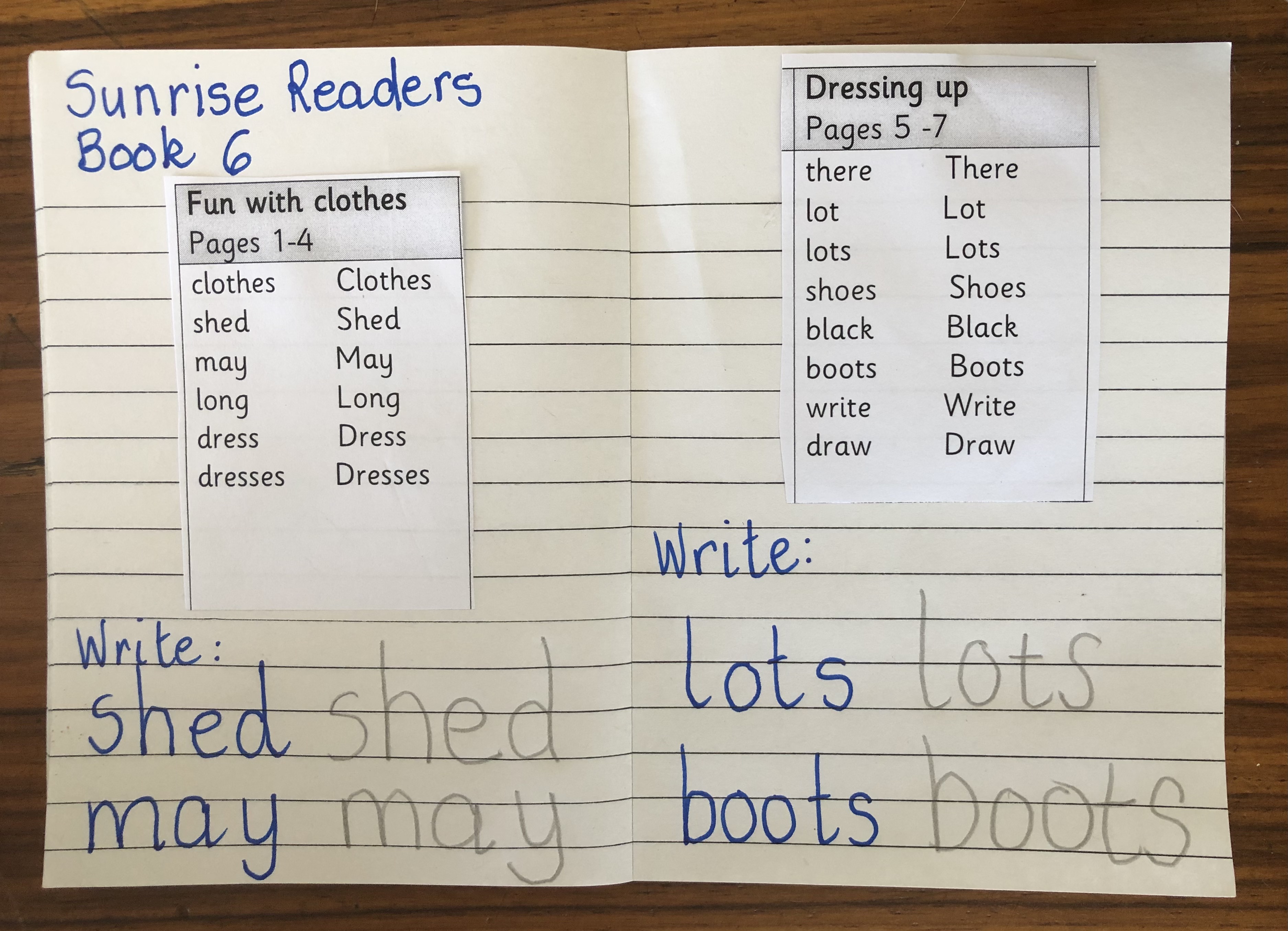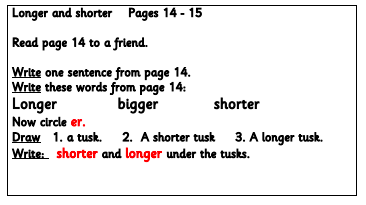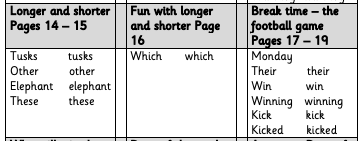Sunrise Readers Book 8
Fun Days at School
Sight Words, Flashcards and Word lists

You will find links to free downloadable PDFs for three sets of flashcards/word cards below:
- Large classroom flashcards for use with the whole class or groups.
- Medium-sized (3×3) flashcards for use in groups and in games with individuals or pairs.
- Small flashcards to be used for review
- Word lists for each story – to be taken home to review
Large Classroom Flashcards:
Complete Set of Large Flashcards/ Wordcards for the Words introduced in this book (See inside the back cover).
- Print the flashcards and cut them out.
- Paste them onto card:
- lower case words in the front, and
- the same word starting with a capital letter on the back of the card.
- Laminate for durability.
- Store each book’s wordlist/flashcards in a separate box ( a shoe box is ideal).
- Please note – past tense is introduced in Book 5.
- For your interest, past tense words are recorded in blue.
- N.B. We have supplied each word in 2 forms – starting with i) lower case and ii) capital letters. A WORD LOOKS DIFFERENT TO A NEW LEARNER WHEN IT HAS A CAPITAL LETTER!
- Many teachers prefer to introduce the words using just the lower case letters, unless it’s a proper noun: Grandfather, Joseph, Noah etc. However, others flip the cards to expose the children to both.
Medium Sized 3×3 Flashcards – ideal for review or games with groups, pairs, individuals.
Smallest Flashcards – ideal for review
Story by story wordlists for review
Teachers may want to stop sending the smallest word cards home (cut out and in soap boxes) for learners’ to review with care-givers. They may prefer to give learners a small A6 notebook with the wordlists for each story pasted onto pages. (See image below).

A sample exercise has been given to give teachers an idea of how they could give learners further practice with the sight words – Read, write. and draw. (See the image below.)

Many of these are sight words, but some are simple cvc words that can be sounded out once the learners have learned the sounds that the letters make. (Teachers will be introducing letters and their sounds systematically whilst also introducing sight words). By the time a learner is reading Book Eight, she should be able to sound the following Book Eight words out for herself:
Sound It out: Say the word: Make a sentence:
w-i-n – win Chipo will win the race.
t-e-n – ten Tatenda is ten years old.
Simple 3 letter words to sound out in Book 8:
end ten win
Learners who know their sounds may enjoy attempting to sound out these 4 letter words from Book 8:
b-e-s-t – best Words in Book 8 that have the same sounds:
t-u-s-k – tusk best – rest ; hurt- burn- Saturday- church; ten –end
c-l-a-p – clap count – shout
d-r-u-m – drum
l-a-n-d – land
r-e-s-t – rest
As before: Teachers may now prefer to send sight words home to be reviewed in lists rather than as flashcards. (This is mainly for convenience sake, as the flashcards have multiple benefits including being reviewed in games.)
These lists include the sight words for every story. They are introduced and reviewed before learners begin to read the book.

